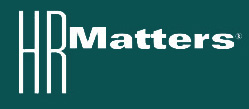Talent Management Parallels Brain Science
What tools does your organization use to optimize its’ talent management practices? What about brain science? As odd as it may seem, brain science may offer HR and talent management enhancement – according to an article from a Talent Management.com contributor, John Boudreau, professor and research director at the University of Southern California’s Marshall School of Business and Center for Effective Organizations.
The focus here is consciousness. Brain science tells us that there are differences in consciousness levels of brain function, like the difference between waking, sleep, deep anesthesia and a coma. Understanding these levels provides insight into levels of consciousness, which can help your organization.
An experiment performed by Giulio Tononi, a chairman in consciousness at the University of Wisconsin, measures consciousness levels. Tononi and his colleagues put a net of small magnetic coils on subjects’ heads. The coil delivered bursts of magnetism which caused neurons in the brain to fire. In subjects that were awake and sleeping, the brain reverberates like a ringing bell. The results in subjects under anesthesia were not as cohesive as awake and sleeping participants. More integrated signals within the brain signifies consciousness.
Tononi had to study a little further and researched information system engineering to provide support for his experiment. Here, he discovered the concept of “phi,” and this measures how much distinctive and integrated information is contained in a system.
If a system has lots of isolated parts, phi is low because the parts cannot share information. The highest phi occurs when network parts are organized into separate clusters and then joined. The most conscious system is where there are lots of specialists who can talk to each other effectively so the amount shared and integrated in the network is high.
Back to the main point: How can this brain science help make a cohesive workforce? Don’t worry, we’re getting there. Isolating activity in one area of the organization means that other parts of the organization aren’t getting all the information necessary to reach a cohesive company goal. Departmental isolation creates a gap between all the different parts of the company. Use synergy to be sure a consistent, lasting core identity is established for the organization.
Talent managers need to create heightened organizational innovation and set levels of sharing and coordination. Enhancing organizational consciousness is mainly about fine-tuning the levels of environmental sensitivity among employees within the workplace and integrating employee activity. To read more about how brain science and consciousness levels correlate with your talent system, click here to read the full article.
